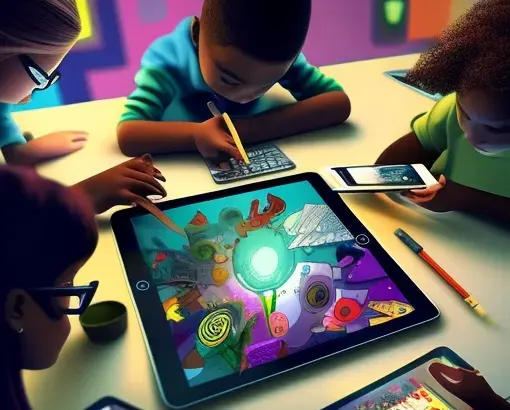The rapid development of technology has led to the creation of technology-based learning environments in education and instruction. The Education Technologies department provides roadmaps to all stakeholders to make education independent of time and place, ensuring the planned integration of technology into education to foster innovative perspectives.
To improve students' learning and enable them to use technology effectively and responsibly, the Education Technologies department prioritizes the professional development of teachers by identifying their needs and planning regular in-service training sessions in line with evolving technologies. These training sessions are planned in the form of online and face-to-face workshops according to the needs, and they continue through the continuously evolving teacher training portal, where the contents are produced and improved by the Education Technologies department.
Google Workspace for Education Plus
Google workspace for education is used at all levels from age three to 12th grade to ensure the continuity of learning beyond the boundaries of place and time and to support students' skills in organization, creativity, communication, and collaboration. Applications align with students' ages, technology levels, and educational models. To protect student and teacher privacy, Eyüboğlu Google Workspace for Education accounts are closed to external entities, unlike personal Google accounts. Our IT department continuously monitors Google's announcements and notifications specific to educational institutions and adjusts service management and restrictions through the management panel.
With the Google Workspace for Education package, students can access educational opportunities based on collaborative work through a secure platform.

Tablet Supported Education
In the “Bring Your Own Device (BYOD)” program, students in 6th grade and above bring their own tablets to school. This approach offers students the opportunity to maximize their potential by achieving outcomes such as media literacy, analytical thinking, research skills, fostering creativity, enhancing collaboration in communication, rapid access to information, and effective time management. It prepares students to be fully equipped for their future education and careers.
Information Technology Curriculum
The curriculum for Information Technology is designed with a holistic and project-based approach, covering different grade levels from kindergarten to high school and targets 21st-century skills such as collaboration, communication, teamwork, critical thinking, problem-solving, and decision-making through projects. The goal is to help students adapt to change and be well-prepared for their future lives. It allows students to delve into various areas such as coding, design, electronics, robotics, and digital citizenship at progressively higher levels of difficulty and depth at each grade level.
The curriculum is designed taking into account the ISTE (The International Society for Technology in Education) standards, which are globally recognized and influential in the integration of educational technologies that create high-impact, sustainable and scalable learning experiences for all students.
Coding
Coding activities, planned at various difficulty levels using different programming tools and languages, help students understand and apply the fundamental principles and concepts of computer science, including logic, algorithms, and data representation. This enables students to analyze and solve problems numerically and write computer programs for solutions.

Electronic Robotics
Electronic robotics projects, supported by resources such as robotics laboratories, various educational robot kits and virtual platforms, enable students to easily concretize the abstract concepts they learn during programming and observe the immediate impact of the programs they write. Through project-based electronic and robotics work, students can easily and effectively develop algorithmic-based and computational thinking skills while also establishing stronger connections between programming and real-life situations.

Digital Citizenship
With the implementation of the CommonSense curriculum, students can critically articulate the individual, cultural, and societal impacts of technology; they understand how to stay safe, leverage opportunities, and manage risks. In line with our academic integrity policy, students learn to gather and use information appropriately and ethically, as well as to use social tools responsibly and safely.

Design
Design and design-focused thinking skills are of great importance in developing students' creativity and adapting to innovations since they involve exploring different perspectives and approaches in problem identification and solution.